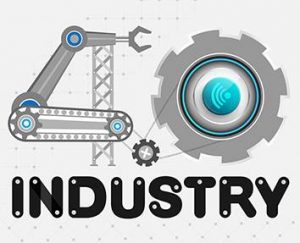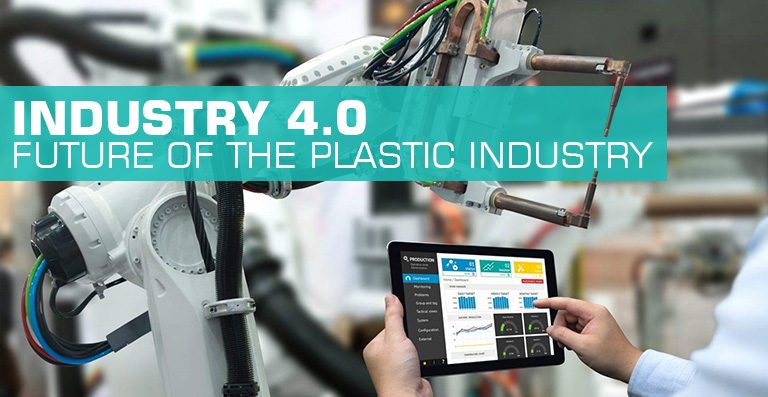Industry 4.0 – An Impetus to the Plastics and Packaging Industry
What is Industry 4.0?

The term ‘Industry 4.0’ is the advent of a promise of a new industrial revolution—one that involves the integration of advanced manufacturing techniques with the Internet of Things to create manufacturing systems that focus heavily on interconnectivity, automation, machine learning, and real-time data that communicate, analyze, and use information to drive further intelligent action back in the physical world.
The emergence of Industry 4.0 in the packaging sector denotes a rapidly evolving landscape with the latest digital technology tools being deployed. While there has been a prevalence of technological innovations in almost all aspects of our daily life, packaging industry activities have not been as data-driven.
Stringent quality standards and the drive towards sustainability are making data more critical for decision making. To process large amounts of data, track trends and mark out the outlier, automation is being increasingly utilized. To meet the new standards of sustainability, the first few packaging initiatives commenced with lightweight requirements which were followed by the introduction of recycled content and the development of biodegradable polymers.
Technology paved the way for a number of innovations in aseptic filling, high-pressure processing, active bases, large cavitation molding, blow filling, nitrogen dosing, deeper grips, and ergonomic branded shapes. Digital technology has largely contributed to these production techniques and related data to improve effectiveness and increase efficiency.
Old machines are being revamped with modern computer control and feedback technology. Shot by shot, cavity by cavity real-time data is being provided by processing machines which are critical for making good quality parts in a narrower specification window. This
data is used to discern trends and tackle problems before they manifest themselves.
With the help of high-resolution cameras that look at processing attributes like injection or blow pressure profiles, data acquisition technologies have improved. Part weight, thickness distribution, defects in sealing surface or pinholes in parts due to contamination can be monitored with additional sensors. This information can now be transferred from the machine to nimble computers that analyze and send instructions to robots. The parts that do not meet specifications are ejected without human intervention.
Operator’s Role Evolving
With digital process assistants that function like a know-it-all expert, the job of the machine operator is also evolving. The continuous guidance allows for a tightly controlled process window that reduces scrap and warns every time the manufactured parts stray from the target specifications.
The change is not limited to only equipment functionality but also expands to product development. With simulation and other digital technologies being used to improve speed to market, concept to commercialization is less of trial and error now. Package design and process optimization are being pursued with computer algorithms that could not be captured in prior analog methods involving human-penned solutions, therefore, opening new pathways for additional innovation.
Today, companies don’t have an option but to adopt a more digital-centric strategy with the help of digital tools so that they do not lag behind or become obsolete. Industry 4.0 will surely be the harbinger of many exciting developments in the years to come.
Leave a Reply Cancel reply
Recent Posts
- Understanding The Materials That Are Used To Build Plastic Toys
- All You Need To Know About Food-grade Plastics
- A Glance At The Materials That Boost The Performance Of Plastics
- Understanding The Importance Of Exploring New Business Opportunities In The Plastic Industry
- Understanding The Importance Of Investing in R&D For The Plastic Industry
Categories
- 3D Printing
- AIPMA
- Automation
- Automobile Sector
- Bio Plastics
- Environment
- Innovations In Recycling
- Latest Innovations
- Molds & Dies
- News
- Packaging Industry
- Plastic
- Plastic Application
- Plastic Industry
- Plastic Market
- Plastic Myths
- Plastic News From The World
- Plastic Packaging
- Plastic Products
- Plastic Recycling
- Plastic Solar Cells
- Plastic Toys
- Plastic Waste
- Plastic World
- Plastics
- Plastics And Their Applications
- Plastics In Agriculture
- Plastics In Healthcare
- Plastics In Medical Industry
- Plasticulture
- Processing Machinery
- Recycling Machines
- Robotics
- Uncategorized
- Virtual Reality
Archives
- November 2023 (3)
- October 2023 (2)
- September 2023 (3)
- August 2023 (3)
- July 2023 (3)
- June 2023 (3)
- May 2023 (2)
- April 2023 (2)
- March 2023 (2)
- February 2023 (2)
- January 2023 (2)
- December 2022 (3)
- November 2022 (1)
- October 2022 (1)
- September 2022 (2)
- August 2022 (1)
- July 2022 (3)
- May 2022 (3)
- March 2022 (2)
- February 2022 (1)
- January 2022 (1)
- September 2021 (2)
- August 2021 (3)
- July 2021 (4)
- June 2021 (4)
- May 2021 (3)
- April 2021 (2)
- March 2021 (4)
- November 2019 (8)
- October 2019 (8)
- September 2019 (8)
- August 2019 (8)
- July 2019 (8)
- June 2019 (8)
- May 2019 (8)
- April 2019 (8)
- March 2019 (8)
- February 2019 (11)
- January 2019 (8)
- December 2018 (8)
- November 2018 (12)
- October 2018 (12)

